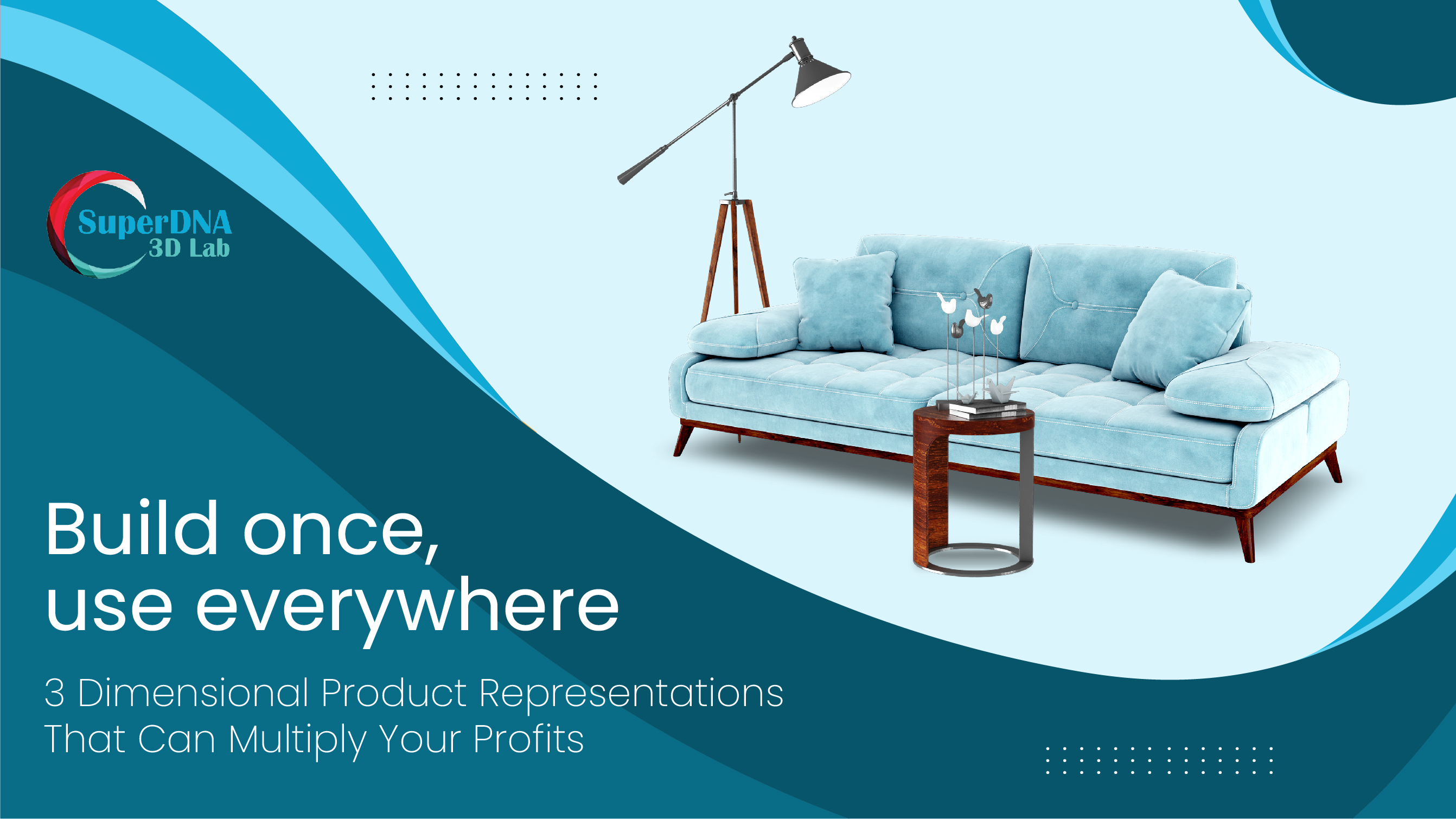
Generally, products that are versatile and flexible enough to be used for multiple purposes and reused numerous times cost more than those exclusive to a particular, one-time use. However, the same is not true when it comes to virtual product representations for e-commerce stores. Product photography, which is the most popular mode of product representation, claims a hefty fortune for a single product image that can’t be tweaked and used across platforms and devices.
On the other hand, 3D product models cost much less and allow for countless alterations of all types and extents. A 3D model of a single product can be used in various solutions and platforms with nominal changes.
In this article, we will talk about the versatility of 3D product renders and how investing in 3D assets instead of product photographs is a more effective and sustainable option for your product representation and marketing needs.
3D models are easily modifiable
Every 3D render is essentially a blend of polygons and triangles that fuse together to create a life-like product representation. By strategically tweaking the polygons, the model can be altered to have more or fewer details as per the requirement. For instance, a product model of a t-shirt can be modified to have a different design, material type and/or fit style and can be marketed as a new launch. No need to invest in manufacturing prototypes for every new product to get it photographed. 3D modeling allows you to build realistic prototypes that can be adjusted to meet your exact vision. Once built, you can create unlimited permutations of a single model and scale up your marketing efforts effectively and cost-efficiently.
3D models have high compatibility
Since most popular 3D software solutions like 3DS Max and Autodesk Maya support multiple 3D file formats, the compatibility of 3D models is very high. A 3D model can perform ideally across devices and platforms and only requires minor upgrades to match the compatibility criteria of various solutions. You can display a 3D model on an AR viewer, a VR device and a 3D configurator without having to rebuild it for every platform or make sweeping changes to its essential mesh.
3D models can bring uniformity to your brand identity
Imagine you are a shoe manufacturer. Your products are displayed on numerous ecommerce platforms like Amazon and eBay along with your social media handles and advertising campaigns. Instead of a single pair of shoes being photographed separately for each platform, you can build a high-quality 3D model that can be distributed to different e-commerce players. No need to worry about its performance. With universal compatibility, your 3D product representation will look and function the same on all platforms, helping you create a uniform and consistent brand identity. Not to mention the collective costs the industry will save.
3D models can be repurposed for your various marketing efforts
Whether it’s motion graphics or still CGI images, a 3D model can be used for your various marketing purposes without significant modifications. Save precious resources by not having to create new models for your video marketing campaign. Existing 3D models can be easily animated to create high-quality, engaging videos that push your marketing game up several notches. A 3D model can also be converted into a photorealistic CGI image. Modify the background, adjust the accessories and stage the perfect environment using advanced CGI capabilities while your product model remains untouched.
3D models can be used in web and app AR viewers
AR shopping experiences are helping e-commerce stores massively boost their sales. With 3D models of your products, offering AR experiences on your website and app becomes seamless. You can integrate your 3D model inventory with an AR viewer and you’re all set to offer immersive shopping experiences that your customers will love. Let them place your products in their environment and make informed and positive buying decisions.
Final thoughts
3D product models can elevate your branding and marketing efforts effortlessly and cost-efficiently. By strategically creating 3D models and making smart tweaks to repurpose them as per the need, you can make a single 3D asset sustain for a long time and offer a staggeringly high ROI. So, jump on the 3D bandwagon and build once, use everywhere